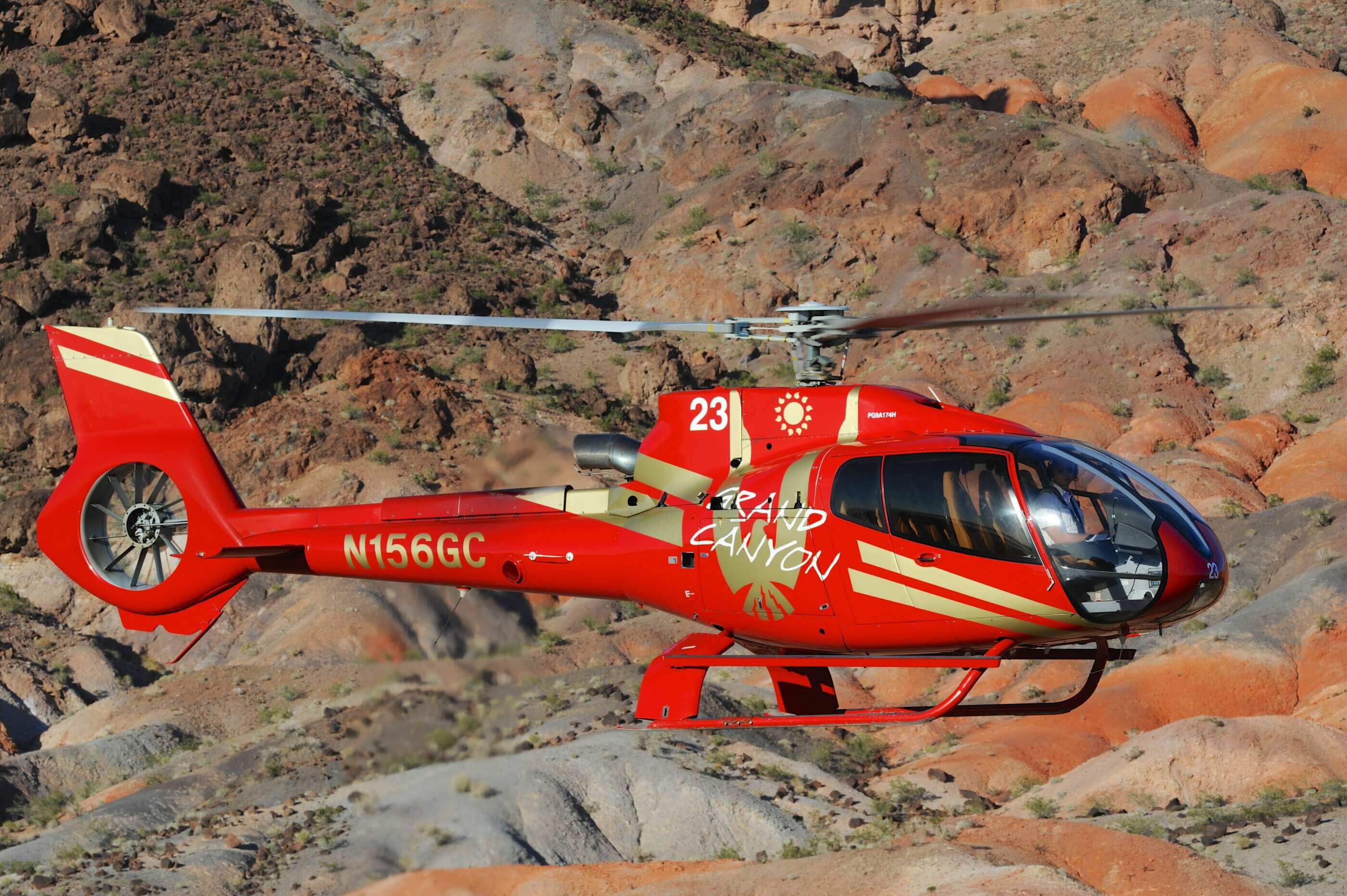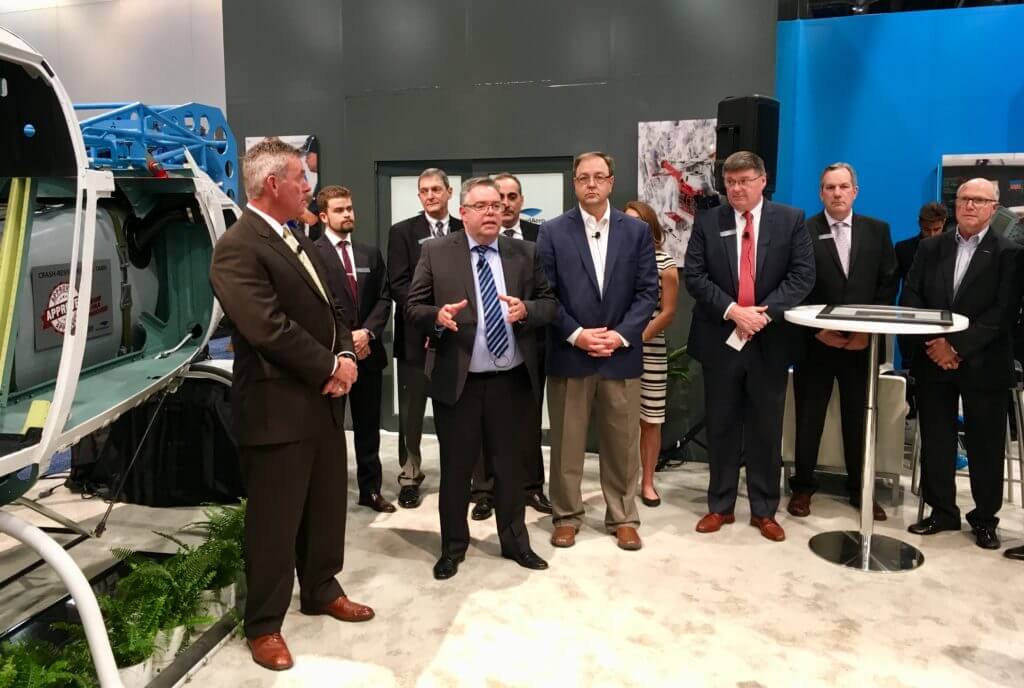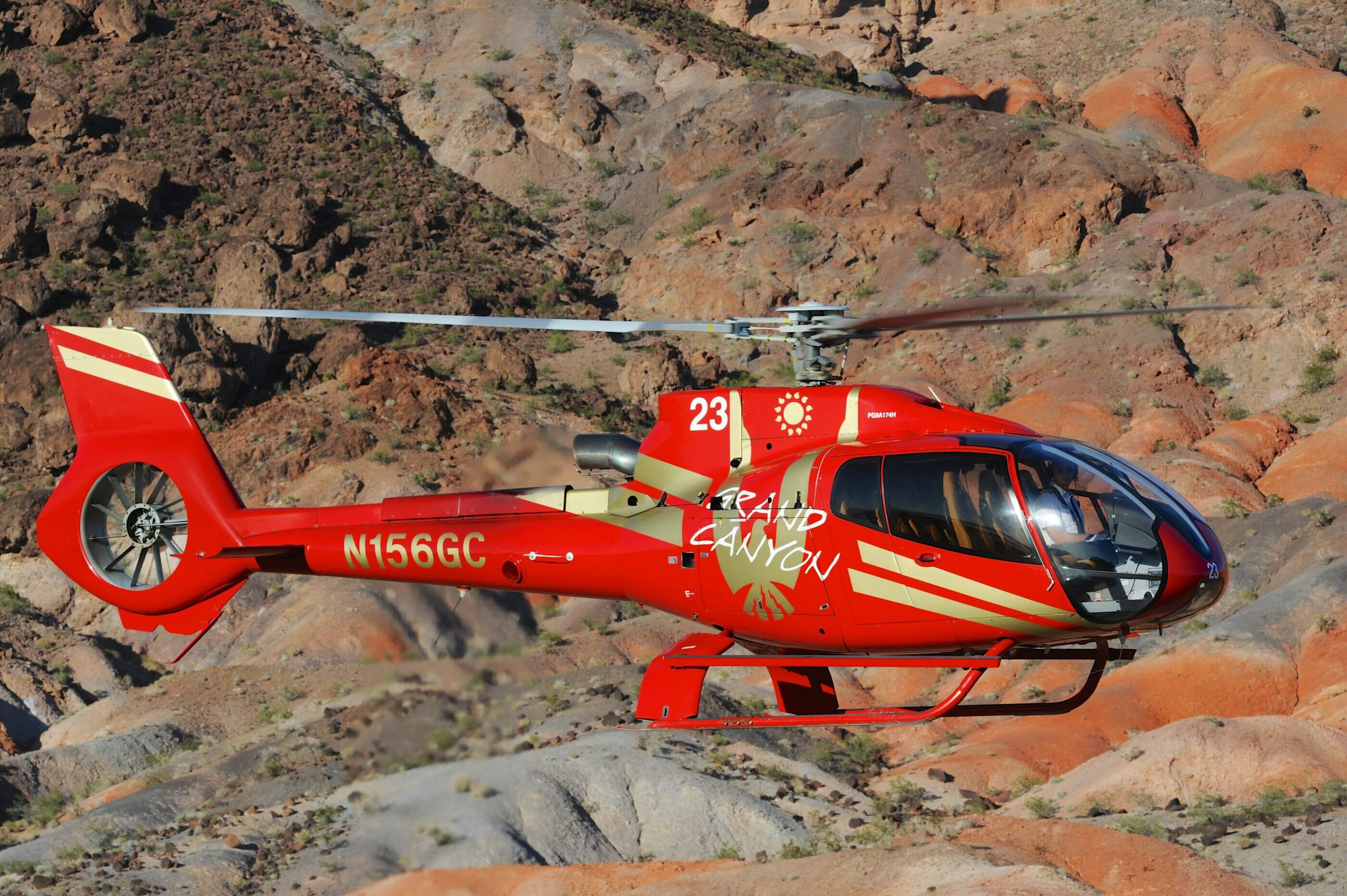The world’s largest helicopter trade show is traditionally a self-congratulatory time for the civil helicopter industry. But at HAI Heli-Expo 2018 in Las Vegas, Nevada, that mood was dampened by a fatal crash that occurred just two weeks before the show — highlighting longstanding industry failures in addressing occupant safety.

Five British sightseeing passengers have now died as the result of the fiery crash of a Papillon Airways Airbus EC130 B4 at the Grand Canyon on Feb. 10: Becky Dobson, Stuart Hill, and Jason Hill, who died at the crash site; and newlyweds Jonathan Udall and Ellie Milward Udall, who died later while hospitalized in Las Vegas.
Jonathan Udall’s parents have already filed a lawsuit against Papillon and Airbus Helicopters, claiming that their son would have survived had the EC130 B4 been equipped with a crash-resistant fuel system (CRFS). The Udalls’ lawyer, Gary Robb, recently represented David Repsher, the Flight For Life nurse who in 2015 sustained burns over 90 percent of his body when the Airbus H125 AStar he was riding in crashed and burned shortly after takeoff.
Repsher received a $100 million settlement from Airbus and Air Methods Corporation on Feb. 1, just days before the Papillon crash. Robb previously secured a $38 million settlement in the 2001 crash of another Papillon sightseeing helicopter, a Eurocopter (now Airbus) AS350 B2. The sole survivor of that crash, Chana Daskal, also suffered severe burns over most of her body in the ensuing post-crash fire.
While the lack of a CRFS in AS350 series helicopters, including the EC130 B4, has long been recognized as a safety problem, not until recently have operators had access to a solution. Although the newest version of the EC130, the H130 (previously known as the EC130 T2) entered service in 2012 with a CRFS as standard equipment, only since 2014 has a rupture-resistant fuel tank been available as an option for the H125 (AS350 B3e) and only since 2016 has it been standard on H125s manufactured in the U.S.
Meanwhile, a CRFS did not become available for legacy AS350 and EC130 B4 helicopters until December 2017, when the U.S. Federal Aviation Administration (FAA) certified a retrofit kit developed by Robertson Fuel Systems and StandardAero. The Robertson/StandardAero tank is a direct replacement for most models of the AS350, including the H125.
At Heli-Expo last week, StandardAero announced the signing of a memorandum of understanding with Papillon for 40 crash-resistant fuel tanks for Papillon’s fleet of AS350 B3 and EC130 B4 tour helicopters. Also at the show, StandardAero recognized the launch customer for the tank, Air Methods, which has committed to retrofitting its entire fleet with CRFS.

At a ceremony at the StandardAero booth, Air Methods CEO Aaron Todd remarked, “[To] give you a sense of how anxious we were for this day to come, we received the first 20 tanks just a few weeks ago and already have 11 installed on our aircraft, and are going as fast as we possibly can. . . . We invite all of the operators to join with us and embrace this new technology, this new solution, so that we can expand the margin of safety in everything that we do.”
It remains to be seen how many existing AS350 and EC130 operators will install the tanks proactively, rather than waiting for their hands to be forced by a catastrophic accident. However, with thousands of the models flying around the world, even a relatively low uptake of the Robertson/StandardAero solution could quickly overwhelm production capacity.
For that reason, Chris Emerson — the president of Airbus Helicopters’ U.S. subsidiary, Airbus Helicopters, Inc. — is encouraging H125 operators to order rupture-resistant fuel tanks directly from Airbus, leaving more of the Robertson/StandardAero tanks available for legacy operators.
“We need to get the volume and the supply chain ready to produce enough [to] meet demand. I think if you look at what Airbus and StandardAero can offer, we can work together,” Emerson told Vertical at Heli-Expo.
“What I’m telling the customers [is] any B3e CRFS retrofit kit, you should buy from Airbus. And we’re going to incentivize that by selling them at cost,” he continued. Emerson said that cost is currently around US$70,000 to $80,000, depending on helicopter model, “and by the way, I’m going to keep working to get it lowered and lowered.”
While post-crash fires have received most of the media attention recently, an FAA analysis of helicopter accident data from 2008 to 2013 found that blunt force trauma accounted for 80 percent of fatalities, even in accidents in which a post-crash fire was present.
The FAA adopted more rigorous dynamic crashworthiness standards in 1989, and stricter fuel system crash resistance standards in 1994. But because both sets of standards apply only to helicopter models certified after the regulation dates, the same loophole that has allowed many new helicopters to be manufactured without CRFS has also allowed them to be sold with seats that do not protect occupants from the higher g forces specified in the 1989 standards.
Currently, only the pilot and co-pilot seats in the H125 are energy-absorbing. When Vertical asked Airbus Helicopters in January whether the company intended to extend this protection, a company spokesperson responded, “There are no plans to introduce energy-absorbing seats for rear passengers.”
At Heli-Expo, however, Emerson contested that statement.
“I can tell you this: I don’t accept that as an answer, OK? Anything is possible and I do believe that it is possible to find a better solution on the AStar back seats than we have today,” Emerson told Vertical. “I for one am going to push the company like you cannot imagine it — because it’s the right thing to do.”
Since the first of the year, five fatal helicopter accidents in the U.S. have resulted in a combined 16 deaths, according to National Transportation Safety Board data. That’s a troubling pace, given that there were a total of 20 fatal accidents and 34 associated fatalities in all of 2017, according to data released at Heli-Expo by the U.S. Helicopter Safety Team.
While the number of fatal U.S. helicopter accidents in 2017 was slightly higher than in the preceding two years, it was still down from the 2013 peak of 30 fatal accidents, which resulted in a combined 62 fatalities. That year was recognized as a particularly deadly one for the U.S. helicopter industry, but 2018 is already on track to eclipse it, with the same number of fatal accidents and a higher number of fatalities than during the first two months of 2013.










